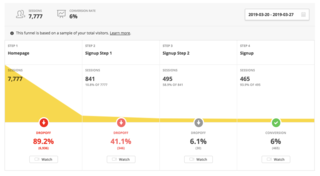
Marketing is the act of satisfying and retaining customers. It is one of the primary components of business management and commerce.

Sales are activities related to selling or the number of goods sold in a given targeted time period. Sales enforce the transaction between sellers and buyer where either tangible or intangible assets, goods or services are sold for a price. The delivery of a service for a cost is also considered a sale. A period during which goods are sold for a reduced price may also be referred to as a "sale".
Database marketing is a form of direct marketing that uses databases of customers or potential customers to generate personalized communications in order to promote a product or service for marketing purposes. The method of communication can be any addressable medium, as in direct marketing.

Consumer behaviour is the study of individuals, groups, or organisations and all the activities associated with the purchase, use and disposal of goods and services. Consumer behaviour consists of how the consumer's emotions, attitudes, and preferences affect buying behaviour. Consumer behaviour emerged in the 1940–1950s as a distinct sub-discipline of marketing, but has become an interdisciplinary social science that blends elements from psychology, sociology, social anthropology, anthropology, ethnography, ethnology, marketing, and economics.
Marketing communications refers to the use of different marketing channels and tools in combination. Marketing communication channels focus on how businesses communicate a message to its desired market, or the market in general. It is also in charge of the internal communications of the organization. Marketing communication tools include advertising, personal selling, direct marketing, sponsorship, communication, public relations, social media, customer journey and promotion.

Personal selling occurs when a sales representative meets with a potential client for the purpose of transacting a sale. Many sales representatives rely on a sequential sales process that typically includes nine steps. Some sales representatives develop scripts for all or part of the sales process. The sales process can be used in face-to-face encounters and in telemarketing.

Advertising management is how a company carefully plans and controls its advertising to reach its ideal customers and convince them to buy.
In marketing, lead generation is the process of creating consumer interest or inquiry into the products or services of a business. A lead is the contact information and, in some cases, demographic information of a customer who is interested in a specific product or service.
Lead management is a set of methodologies, systems, and practices designed to generate new potential business clientele, generally operated through a variety of marketing campaigns or programs. Lead management facilitates a business's connection between its outgoing consumer advertising and the responses to that advertising. These processes are designed for business-to-business and direct-to-consumer strategies. Lead management is in many cases a precursor to sales management, customer relationship management and customer experience management. This critical connectivity facilitates business profitability through the acquisition of new customers, selling to existing customers, and creating a market brand. This process has also accurately been referred to as customer acquisition management.
The following outline is provided as an overview of and topical guide to marketing:
A touchpoint can be defined as any way consumers can interact with a business organization, whether person-to-person, through a website, an app or any form of communication. When consumers connect with these touchpoints they can consider their perceptions of the business and form an opinion.
Brand awareness is the extent to which customers are able to recall or recognize a brand under different conditions. Brand awareness is one of two dimensions from brand knowledge, an associative network memory model. It is a key consideration in consumer behavior, advertising management, and brand management. The consumer's ability to recognize or recall a brand is central to purchasing decision-making because purchasing cannot proceed unless a consumer is first aware of a product category and a brand within that category. Awareness does not necessarily mean that the consumer must be able to recall a specific brand name, but they must be able to recall enough distinguishing features for purchasing to proceed. Creating brand awareness is the main step in advertising a new product or bringing back the older brand in light.
Customer experience is the totality of cognitive, affective, sensory, and behavioral customer responses during all stages of the consumption process including pre-purchase, consumption, and post-purchase stages.
Demand generation is the focus of targeted marketing programs to drive awareness and interest in a company's products and/or services. Commonly used in business-to-business, business-to-government, or longer business-to-consumer sales cycles, demand generation involves multiple areas of marketing and is really the marriage of marketing programs coupled with a structured sales process.

The AIDA marketing model is a model within the class known as hierarchy of effects models or hierarchical models, all of which imply that consumers move through a series of steps or stages when they make purchase decisions. These models are linear, sequential models built on an assumption that consumers move through a series of cognitive (thinking) and affective (feeling) stages culminating in a behavioural stage.

A user journey is the experiences a person has when interacting with something, typically software. This idea is generally used by those involved with user experience design, web design, user-centered design, or anyone else focusing on how users interact with software experiences. It is often used as a shorthand for the overall user experience and set of actions that one can take in software or other virtual experiences.
Call to action (CTA) is a marketing term for any text designed to prompt an immediate response or encourage an immediate sale. A CTA most often refers to the use of words or phrases that can be incorporated into sales scripts, advertising messages, or web pages, which compel an audience to act in a specific way.

Funnel analysis involves mapping and analyzing a series of events that lead towards a defined goal, like an advertisement-to-purchase journey in online advertising, or the flow that starts with user engagement in a mobile app and ends in a sale on an eCommerce platform. Funnel analyses "are an effective way to calculate conversion rates on specific user behaviors". This can be in the form of a sale, registration, or other intended action from an audience.
Marketing automation refers to software platforms and technologies designed for marketing departments and organizations automate repetitive tasks and consolidate multi-channel interactions, tracking and web analytics, lead scoring, campaign management and reporting into one system. It often integrates with customer relationship management (CRM) and customer data platform (CDP) software.
Data-driven marketing is a process used by marketers to gain insights and identify trends about consumers and how they behave — what they buy, the effectiveness of ads, and how they browse. Modern solutions rely on big data strategies and collect information about consumer interactions and engagements to generate predictions about future behaviors. This kind of analysis involves understanding the data that is already present, the data that can be acquired, and how to organize, analyze, and apply that data to better marketing efforts. The intended goal is generally to enhance and personalize the customer experience. The market research allows for a comprehensive study of preferences.








